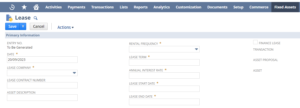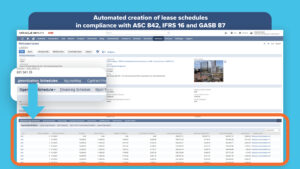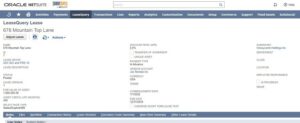Are you old enough to remember the Enron scandal in 2001? It was one of the most significant corporate frauds in history and led to the collapse of Enron Corporation, a major American energy company. When the scandal broke it uncovered a whole raft of fraudulent activity by the execs including off-balance sheet accounting, mark-to-market accounting (to recognise future profits immediately), insider trading, and auditor culpability. Enron was probably the most exciting thing to ever happen to the accounting profession.
One of the tricks employed to disguise liabilities from investors was the use of deceptive operating leases. Enron entered into various operating leases for assets like barges and energy facilities. Instead of treating these leases as straightforward rental agreements, the company engaged in complex financial transactions that were designed to keep the associated debt off its balance sheet. Enron’s use of special purpose entities allowed it to hide the true extent of its liabilities from investors and analysts.
IFRS 16 – Changes to lease accounting
Fast forward to 2019 (18 years later!!) and the International Accounting Standards Board replaced its lease accounting standard IAS 17 with IFRS 16 and thus closed the loop on using operating leases to keep lease commitments off-balance sheet.
IFRS 16, which became effective for annual reporting periods beginning on or after January 1, 2019, represents a significant change in lease accounting. It requires lessees to recognize almost all leases on their balance sheets, treating them as right-of-use assets and corresponding lease liabilities. This change was implemented to provide a more comprehensive and transparent representation of a lessee’s obligations arising from leases.
Proposed changes to UK GAAP
The Financial Reporting Council (FRC) announced in December 2022 that FRS 102 (UK GAAP) lessee accounting will change to come in line with IFRS 16. This could happen in 2026 or soon after. For possible answers to this question, we can look back to 2019 when companies who use IFRS or FRS101 adopted IFRS 16. The on-balance sheet approach proposed by FRED 82 is essentially the same as IFRS 16 lessee accounting, barring certain expedients yet to be finalised.
The main requirements of IFRS 16 include:
1. Recognition of Lease Liabilities and Right-of-Use Assets
- Lessees are required to recognize lease liabilities on the balance sheet for the present value of future lease payments.
- A corresponding right-of-use asset is also recognized, representing the lessees right to use the leased asset during the lease term.
2. Classification of Leases
- IFRS 16 eliminates the previous distinction between operating leases and finance leases for lessees.
- All leases, with some exceptions for short-term leases and low-value leases, are treated as finance leases for lessee accounting purposes.
3. Measurement of Lease Liabilities and Right-of-Use Assets
- The lease liability is initially measured at the present value of lease payments, discounted using the lessees incremental borrowing rate.
- The right-of-use asset is initially measured at the amount of the lease liability, plus any initial direct costs, and is subsequently depreciated over the lease term.
4. Subsequent Measurement of Lease Liabilities
- Lease liabilities are subsequently measured using the effective interest method, with interest expense recognized in the income statement.
5. Subsequent Measurement of Right-of-Use Assets
- Right-of-use assets are depreciated over the shorter of the assets useful life and the lease term.
- Impairment tests are required for right-of-use assets, and any impairment losses are recognized in the income statement.
6. Disclosures
- Lessees and lessors are required to provide specific disclosures to enhance transparency regarding their leasing activities. This includes information about the nature and terms of leases, significant judgments made in applying the standard, and future lease payment obligations.
7. Transitional Provisions
- IFRS 16 includes transitional provisions for the initial application of the standard. Lessees can choose from different transition options, including a modified retrospective approach or a simplified approach.
8. Lessor Accounting
- Lessors continue to classify leases as finance leases or operating leases, with different accounting treatments for each. The lessor accounting model remains largely consistent with the previous standard, IAS 17.
Lease Accounting in NetSuite
NetSuite’s Fixed Asset Management app contains a lease accounting module that is designed to streamline lease accounting and aid compliance with IFRS 16. The feature will allow you to:
- Maintain a centralised register of leases and all necessary information such as payments, interest rates, history, etc
- Generate lease amortisation schedules outlining the future lease payments and calculating the interest and principal elements
- The accounting including the creation of the asset and liability and monthly interest is generated based on information contained in the lease record and lease amortisation schedule.

Limitations of NetSuite Lease Accounting
The NetSuite lease accounting module is basic and has the following limitations:
- Relatively complex setup that requires a detailed understanding of the accounting transactions required. It can be complicated further if the lease and reporting currencies are different.
- It will struggle with high volumes and more complex lease structures such as variable lease payments.
- The lease record has limited fields to record all the information that you need to properly manage your lease portfolio. Some customisation will be required to record lease terms and any dilapidations provisions for example.
- Limited reporting – The out-of-the-box solution comes with limited reports that will be unlikely to give you the visibility that you need for sufficient and easy visibility over your leases.
- NetSuite lease accounting is not suitable for lessors. The feature can be customised to work for lessors, however, if this is your business you will find it easier to explore a partner software below.
- As with most limitations in NetSuite, they can be overcome with some customisation. There are also several partner apps native to NetSuite that you can use to make your lease accounting process easier.
Other lease accounting software solutions
NetGain
NetGain is a lease management solution that is native to NetSuite meaning it is all accessed through your NetSuite platform. It is well regarded by users and can handle more complex lease scenarios. It has a separate option for lessors making it a good option for lease businesses. The interface and setup are quite similar to the NetSuite lease accounting feature. The app uses lease records and amortisation schedules and creates journals based on these.

It will allow you business to deal with more complex lease scenarios such as prepayments, lease incentives, rent holidays, renewal options, removal costs etc. It is a more comprehensive lease management tool making it easier to have visibility over and manage a portfolio of leases. Finally, the standard reporting is better than those available out of the box in NetSuite.
Lease Query
Lease Query is also a native to NetSuite solution. Again, the benefits of using Lease Query will be evident, particularly for more complex lease scenarios and large lease portfolios. There is also the added benefit of increased automation around generating amortisation schedules and journal entries.
Lease Query is configured in a similar way to the NetSuite Lease Accounting feature. It uses lease records, amortisation schedules, and generates journals based on these.

Lease Accelerator
Lease Accelerator is one of the market-leading lease accounting and administration software. It deals with all complex lease accounting features well. Lease Accelerator is a comprehensive solution and popular with enterprise clients. It comes with lots of prebuilt reports and some additional analytics to help with decision-making.
The main disadvantage of Lease Accelerator is that it does not currently have a NetSuite integration meaning an integration will have to be configured.
Conclusion
This post looks at lease accounting capabilities in NetSuite. Additional requirements have been introduced for listed and other companies subject to IFRS 16. Further changes similar to IFRS will be introduced for UK-based SMEs in the coming years which will require a lot of businesses to look at their processes for lease accounting.
We intend this post to be a good reference for those businesses and any others using NetSuite for lease accounting. As well as the functionality available in NetSuite we have also introduced some 3rd party lease accounting solutions that will benefit more complex or larger volume leases and help you optimising NetSuite.
If you would like to speak about any of these solutions, implementing them, or migrating lease data to them, then get in touch for a free conversation.
